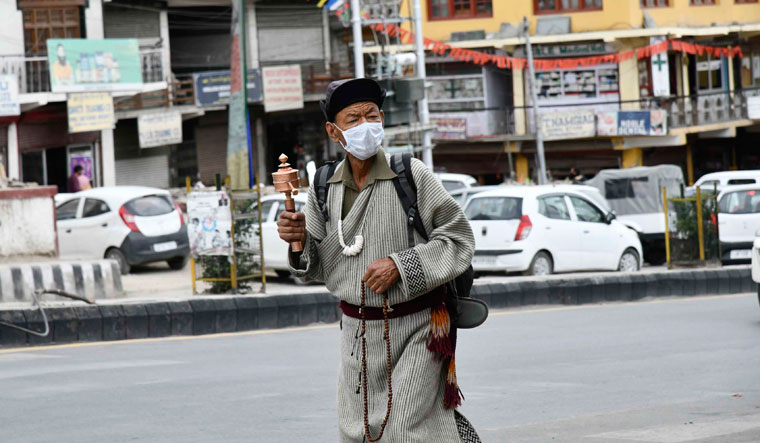For the people of Ladakh, the past one year has been one of hope and apprehensions. Hope, because the erstwhile Buddhist kingdom’s decades-old dream to be a Union territory finally came true on August 5 last year. “It was the result of a 70-year fight of the people of Ladakh to get their identity,” said P.T. Kunzang, president of the influential Ladakh Buddhist Association, which had been spearheading the agitation.
Apprehension, because Ladakhis now worry about jobs and protecting their land and fragile ecosystem. “People who want to use the resources in Ladakh for selfish purposes are not welcome,” said J.T. Namgyal of the BJP, who represents Ladakh in the Lok Sabha.
Ladakh has two districts, Leh and Kargil. Leh is dominated by Buddhists; Kargil, by Shia Muslims. There are about 1.15 lakh Shias and 1.35 lakh Buddhists. Hindus, Sikhs, Sunni Muslims and others number around 10,000.
The past one year has not seen any big-ticket development work here. Prime Minister Narendra Modi recently approved the plan for the first Central university in Ladakh, which will have a centre for Buddhist studies. This will help Ladakhis, who now have to travel hundreds of kilometres from home for higher education. The Union government has also allocated 06,000 crore for various development projects. “A cold desert, Ladakh only gets few months of summer to carry out development work. Activities had to wait till March because of the snow. But from March onwards, the Covid-19 pandemic has gripped us,” said Gyal P. Wangyal, chairman of the Ladakh Autonomous Hill Development Council.
According to Wangyal, Ladakh has to start from scratch. “Ladakh used to get only 2 per cent of the total budget of Jammu and Kashmir [even though it covered 65 per cent of the state’s area]. So development was almost negligible here,” he said.
Also read
- Article 370: Tight security in J&K; regional parties await SC verdict
- SC verdict on Article 370 today. Here is the recap of the hearing
- SC to hear pleas challenging abrogation of Article 370 from August 2
- SC to hear pleas against abrogation of Article 370 today; PDP, NC flays Centre's affidavit
- G20 meet begins in Srinagar today under tight watch; 60 delegates to attend
- Fearing its defeat, BJP avoid elections in J&K deliberately: CPI
The council, which was set up in 1995 after a series of agitations, has 30 members; re-elections are expected to be held in September or October. The ruling BJP has an edge over the Congress in the polls.
With Article 370 gone, there is fear that the influx of outsiders would lead to a change in the region’s demographics. “With no special status, Ladakh will become open for all, especially in terms of real estate,” said Wangyal. “That is why we need protection of land. It has to be ensured that potential buyers do not exploit us. Domicile rules for Ladakh are also required.”
Abdul Qayum, president of the Anjuman Moin-ul-Islam, which represents 20,000 Sunni Muslims in Leh, Dras and Zanskar, fears that Ladakh is set to lose its cultural identity. “With enough funds from the Union government, Ladakh will develop,” he said. “But I feel the ‘Ladakhiness’ will be lost. We have a distinct culture and identity; I don’t think it is going to last.”
Qayum said Leh has benefited administratively—people no longer have to travel to Srinagar to make their grievances heard. But he believes that demographic change is now imminent. Leh is easily accessible by air, and every year it hosts tourists that number four times its population.
Qayum said the only way forward is to give more teeth to the hill development council. “Unless the Union government empowers the council,” he said, “I do not see any change in decision-making.”


